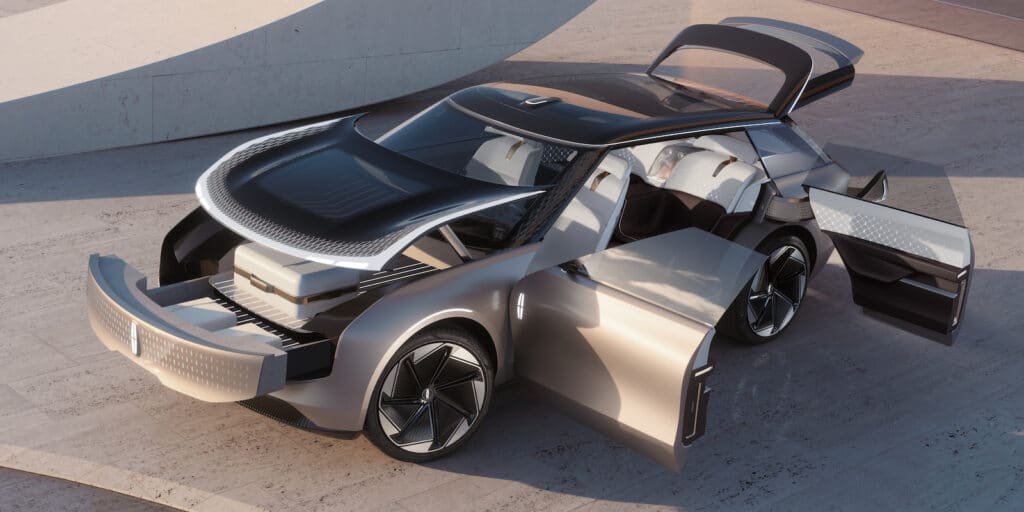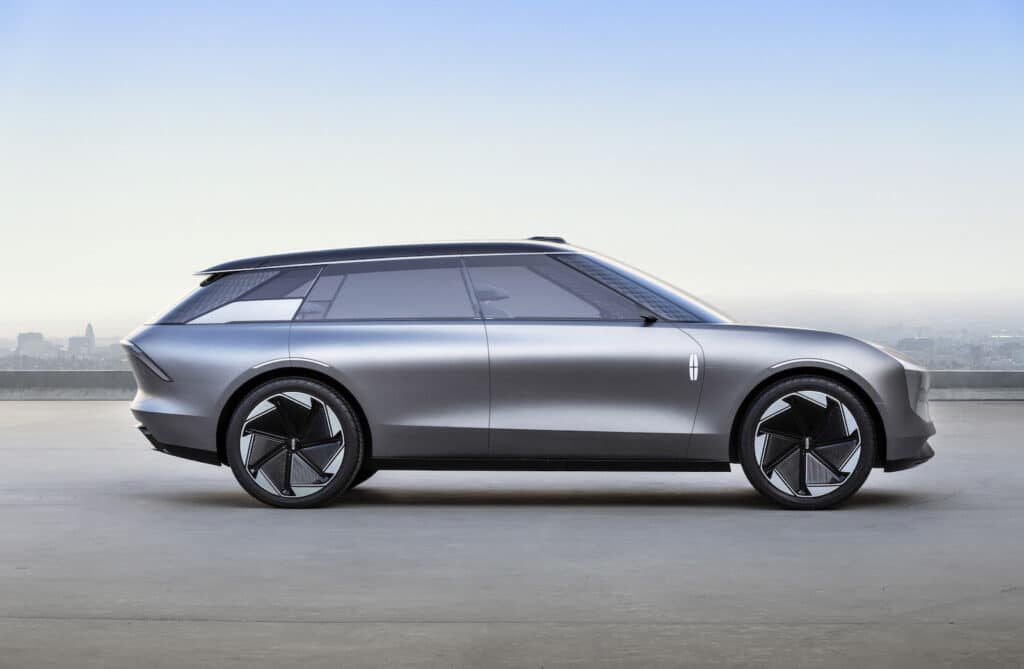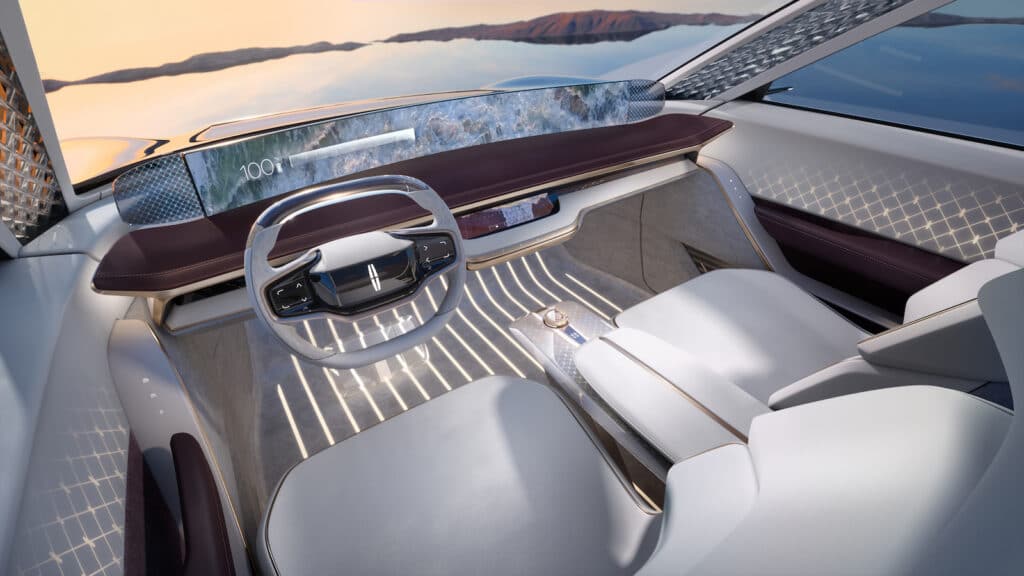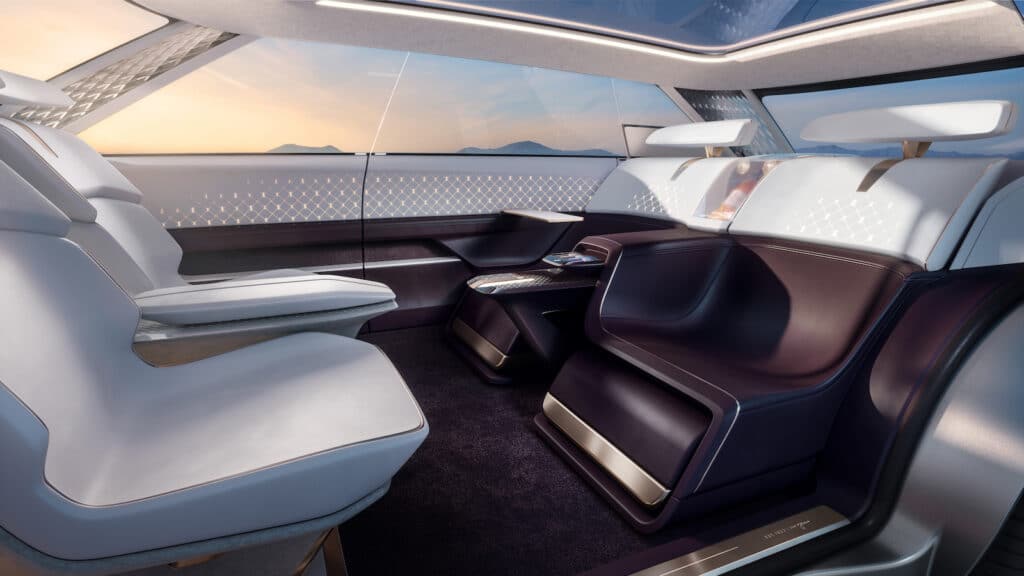LINCOLN

As the Lincoln celebrates its 100th anniversary of Ford Motor Co. ownership, the luxury brand is refocusing its design direction with the unveiling of the Lincoln Star Concept, an idealized realization of the brand’s forthcoming electric vehicle design. The concept was shown to media on Tuesday ahead of its reveal Wednesday in Los Angeles.
Lincoln plans to sell three new EVs by 2025 with a fourth to follow in 2026. By mid-decade, Lincoln expects more than half of its volume will come from sales of zero-emission vehicles, according to Joy Falotico, president of Lincoln.
The new models are part of Ford Motor Co.’s plan to spend more than $30 billion to electrify its line-up during the coming decade. While some models will remain, such as the Corsair, which will reemerge as the Corsair-E, others will vanish, including the current Lincoln Nautilus.
Illuminating Lincoln’s future...Lincoln’s new concept is built on Ford’s rear- and all-wheel-drive flexible battery electric architecture that incorporates its next-generation Lincoln Intelligence System. It allows for connected vehicle-to-vehicle and infrastructure communication as well as cutting edge driver-assist features.
Described by Lincoln Global Design Director Kemal Curic as a “rolling computer,” the new sport-utility electric vehicle is a study in reductive design, removing elements that are unnecessary while using design elements in a modern, non-traditional way. Created to be design inspiration for future Lincolns, it’s near total total lack of heritage cues is the Star Concept’s most striking feature.

A modern new wardrobe for a traditional brand...Designers used lighting, not chrome, to accent the vehicle’s appearance, applying a light band to visually underpin the black roof, rather than the chrome currently used on Lincoln vehicles.
It visually cuts the height of the side glass, giving it a chopped appearance. The design cue is also one of the only heritage elements used on the Star, harkening back to the chrome band used above the windshield of the 1956 Continental Mark II.
Another, the Lincoln star logo has been redesigned and reimagined as a backlit logo used on the front and side of the vehicle. Up front, where you’d typically find a chrome grille, it’s accentuated by LED lighting that moves and changes, framed by a shape that takes its form from the current Lincoln grille.
Above it, a large wing-like lighting signature accentuates the front trunk lid. The lack of a gas engine not only allows designers to provide a front trunk, something the Mercedes-Benz EQS and BMW i7 don’t have. Not only do they not have it, but the “frunk” on the front of the Star is unlike any other. It extends forward, like a drawer, revealing additional storage space.
That functionality isn’t just limited to storage, but also allows for a lower hood line improving the aerodynamics. It’s finished with a semi-transparent electrochromic glass hood that darkens when parked to hide cargo from view.
On the side, lighting accentuates the wheel arches. In the rear, a large wing-like shape takes its cue from the chrome band of the 1960s Lincoln Continental’s taillamps.
Uniquely, the Star Concept’s greenhouse tapers as it flows rearward, even though the lower body doesn’t, lending it a somewhat muscular stance. An integrated rear roof spoiler aids its aerodynamics.
The greenhouse’s most striking feature is its see-through A- and D- pillars, made of a 3D-printed metal latticework and covered on the exterior by glass. Its design is replicated elsewhere on the concept, particularly in some lighting signatures. It remains to be seen whether this will reach production, but it helps eliminate a blind spot and lends the cabin a feeling of space.
The concept is finished in a soft satin paint, lending credence to Lincoln’s design credo of “Quiet Flight.”
Some of the elements used on the car, such as the coach doors, lack of a B-pillar, and sideview cameras rather than mirrors, are typical concept car fodder. But others, such as the vehicle’s styling and use of lighting, are far easier to put into production, Lincoln executives admit.
“Lighting technology has come a long way in the last few years; there’s a lot you can do with the backlit LEDs,” Jraiche said. “We provide lighting in a way that that you wouldn’t necessarily see during the day or in the night unless you illuminate it behind the surfaces.”

The cabin itself feels incredibly spacious, thanks to the use of pedestal-mounted front seats and center console, a panoramic sunroof, and the latticed A-pillars. The rear seat is particularly roomy, and Jraiche said that there’s enough room for three-row seating. But the automaker opted to provide the luxury of added space instead. This allows them to provide reclining rear seats — a fashionable design feature at the moment.

Up front, a curved horizontal display runs the width of the cabin, while the instrument panel’s wing-like shape also looks to reinforce the brand’s “Quiet Flight” mantra. Unique trim details include crystaline foot pedals and a crystal-trimmed center console with etched Lincoln star.
The concept addresses the autonomous driving future, with a steering wheel that can be stowed, and front seats that swivel to face the rear seats.
And finally, the rear hatch transforms into outdoor seating.

“The Lincoln Star Concept has given us the opportunity to showcase how creativity and design thinking at the same time push the boundaries of where we can take the brand in the future,” Curic said.
“This is just the start of our electric journey,” Falotico added.
Autonews

Nenhum comentário:
Postar um comentário